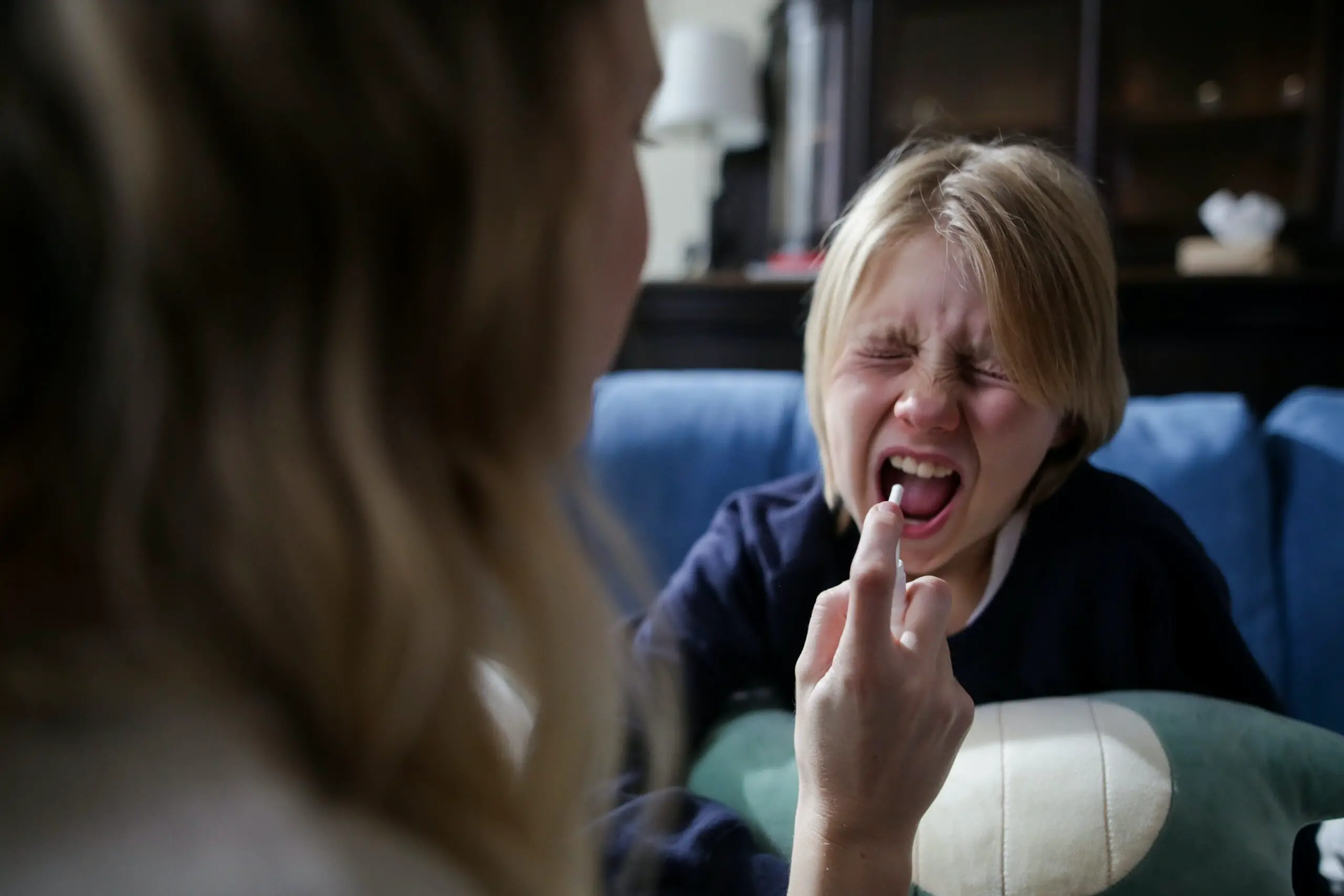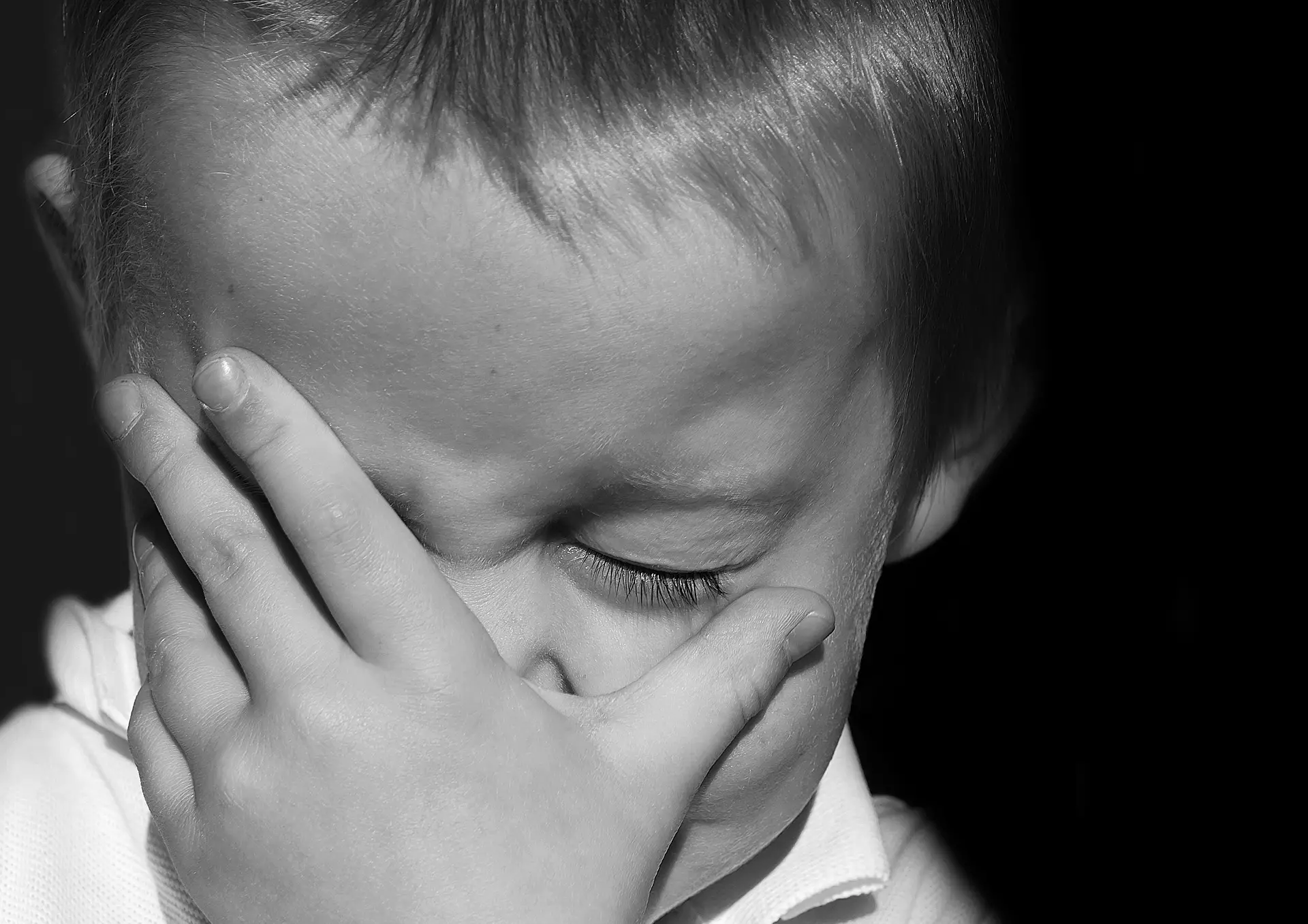Ah, Autumn, it is back to school time. The fall of leaves and crisp morning air. The rise of pumpkins and germ warfare. Wait, what? Yes, it is proven that the return to school often increases doctors’ cases of strep throat in kids and other sicknesses. While viruses are the main culprits behind most sore throats,1/3 of sore throats are caused by group A streptococcus bacteria. It is also the same bacteria behind the infection known as strep throat.
Dealing With Strep Throat in Kids

According to the CDC, strep throat in kids is the most common cause behind most sore throats doctors see. Strep throat is most prevalent in youngsters ages 5- 15(i.e., school-age children). Strep throat, though, is not a virus. It is actually an infection caused by the Streptococcus bacteria. This infamous bacterium snuggles casually in our nose and throat. Your child doesn’t even have to show any signs of being infected and can spread it to others. Oh, yeah, strep is highly contagious. As parents, we know enough that coughing or sneezing is how germs are spread. To get a little scientific on the topic, when we cough and sneeze, we release what is called “respiratory droplets” in the air, and that strep bacteria are hitching a ride on them. Do our kids remember to cough or sneeze with their elbows like we adults do (Okay, sometimes adults don’t even remember to.)? Nope, so that sneeze and cough spray is released into the air, and remember our unfriendly neighborhood streptococcus is suitable along with it. So, anyone nearby can breathe in those respiratory droplets with the strep bacteria tagging along for the trip, enter your nose and throat, and be like hello darkness, my old friend, glad to see another nose and throat again. Strep throat in kids can be passed other ways too, which are:
1. Drink or eat from the same glass or plate as a sick person.
2. Touch their lips or nose after touching something and sneezing or cough droplets on it.
3. Touch an epidermal sore on the skin caused by group A strep (impetigo)
Signs of Strep Throat

If your child comes up to you and says they have a sore throat, how can you tell if it’s just a simple sore throat or, worse, strep? Strep throat is not a severe infection in general, although it can be harrowingly painful. The most common signs and symptoms of strep throat are:
· Sore throat that is accompanied by fever
· Swollen front lymph nods
· Red swollen tonsils with white patches (pus pockets)
· Small red spots that appear on the roof of the mouth
· Upset stomach
· And headache
It is also important to note that the sore throat will come on suddenly with no other signs or warnings, like a cough or runny/stuffy nose. Those symptoms usually are not included in strep throat cases. If your child has those symptoms, too, it could be related to a virus and not the strep bacteria. It usually takes a person 4 to 5 days to become sick once infected with group A strep. So, see, you can be spreading it without even knowing you are sick (eek gacks!). Of course, ALWAYS go to your family doctor for proper diagnosis.
Doctor Diagnosis

Strep throat in kids will not go away on its own like a regular sore throat that is caused by a virus. It needs antibiotics to be eliminated. A doctor visit will quell the guessing game by either doing a rapid strep test or a throat culture test. A rapid strep test only takes 5 minutes where a rub on the back of the throat with a giant cotton swab is taken, then tested to see if it shows the presence of the strep bacteria. A throat culture can also be done but takes a few days as that sample is taken back to the lab and put on a culture dish, then left to see if the bacteria will grow. If it does develop, it is positive for strep.
Treatment
To treat strep throat, doctors typically prescribe antibiotics (penicillin or amoxicillin) for ten days. Other symptoms should start to fade by the second or third day.
Though your kids may be feeling better, they should continue to take all their antibiotics as directed. The bacteria may still be lingering and may come back. That is why doctors always stress taking all of your antibiotic medication even if you start feeling better.
Prevention
Good hygiene practices can help prevent strep throat in kids and the spread of streptococcus bacteria. Some good tips and tricks are:
· Always throw away your tissue after use.
· Wash your hands/ hand sanitize after tissue use.
· Teach how to sneeze and cough into your arm or elbow, not your hands.
· If your child is sick, separate their dining utensils, dishes, and drinking glasses from others and wash them after each use in hot, soapy water.
· Encourage hand washing, often with a timer of 20 minutes.
· Keep your child home.
· After your child’s prescription is done, change toothbrushes so you do not run the risk of reinfection. You could get strep throat again.
All can be easier said than done sometimes. Be rest assured instilling good hygiene in our kids does last a lifetime.
What You as a Parent Can Do
As a parent, we don’t like seeing our babies sick, even our moody teens. Here are some things you can do as a parent to help ease your child’s healing.
· Give them plenty of liquids. Water or ginger ale are good choices and easy on the throat. Avoid citric juices like orange, lemonade, grapefruit, etc.
· Treat them to ice pops to help ease their sore throat pain.
· Try warm drinks too. Such as hot cocoa, tea, soup broth can be soothing for the throat.
Conclusion
After starting antibiotics, the good news is that your child should be on the road to recovery pretty quickly. After 24 hours of taking the antibiotics, your child is usually no longer contagious and can return to school as long as they have not had a fever. Again, always follow your child’s pediatrician’s guidelines to be safe.
Sources
https://kidshealth.org/en/parents/strep-throat.html
https://www.cdc.gov/groupastrep/diseases-public/strep-throat.html
https://kidshealth.org/en/kids/strep-throat.html





